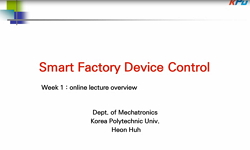Contemporary smartphone competition is generally described as the battle between Apple's proprietary platform and Google's open platform. However, this competition is not limited within smartphone adoption itself. User's pre-adoption of one mobile pla...
http://chineseinput.net/에서 pinyin(병음)방식으로 중국어를 변환할 수 있습니다.
변환된 중국어를 복사하여 사용하시면 됩니다.
- 中文 을 입력하시려면 zhongwen을 입력하시고 space를누르시면됩니다.
- 北京 을 입력하시려면 beijing을 입력하시고 space를 누르시면 됩니다.

모바일 플랫폼 경쟁과 모바일 생태계에 관한 고찰 = An Analysis on Competition and Ecology of Mobile Platform:Based on the Continuous Usage Intention of Smart-Phone OS Platform
한글로보기https://www.riss.kr/link?id=A60170760
- 저자
- 발행기관
- 학술지명
- 권호사항
-
발행연도
2012
-
작성언어
-
- 주제어
-
KDC
325
-
등재정보
KCI등재
-
자료형태
학술저널
- 발행기관 URL
-
수록면
19-47(29쪽)
- DOI식별코드
- 제공처
-
0
상세조회 -
0
다운로드
부가정보
다국어 초록 (Multilingual Abstract)
The empirical testing first evidences that dual model works well as our research model for identifying the reasons of post-adoption. Next, we group our data into two parts in order to compare the switching behavior of iPhone users and Android phone users. iPhone users show much lower switching rate to Android based smart pads, while Android phone users show higher churn rate to iPad (49.3%:96.3%). Especially, satisfaction showed much stronger effect than switching cost on the continuing intention of existing platform, when the analysis is given to the iPhone user's group. From this result, we can conjecture the relatively stronger loyalty of iPhone users. More managerial implications on the mobile platform strategy are driven.
Contemporary smartphone competition is generally described as the battle between Apple's proprietary platform and Google's open platform. However, this competition is not limited within smartphone adoption itself. User's pre-adoption of one mobile platform via smarphone can be connected to the post-adoption of the same mobile platform based on the other smart devices (e.g. smart pad). In this study, we investigate whether user's preference to a certain platform is persistent over mobile ecology, from the pre-adoption of one smart device to the post-adoption of following devices. For this investigation, we adopt the dual-model as the ground theory, where post-adoption of IT product is explained by both dedication and constraint factors.
The empirical testing first evidences that dual model works well as our research model for identifying the reasons of post-adoption. Next, we group our data into two parts in order to compare the switching behavior of iPhone users and Android phone users. iPhone users show much lower switching rate to Android based smart pads, while Android phone users show higher churn rate to iPad (49.3%:96.3%). Especially, satisfaction showed much stronger effect than switching cost on the continuing intention of existing platform, when the analysis is given to the iPhone user's group. From this result, we can conjecture the relatively stronger loyalty of iPhone users. More managerial implications on the mobile platform strategy are driven.
목차 (Table of Contents)
- Abstract
- 1. 서론
- 2. 이론적 배경
- 3. 연구 모형 및 연구 가설
- 4. 연구 방법
- Abstract
- 1. 서론
- 2. 이론적 배경
- 3. 연구 모형 및 연구 가설
- 4. 연구 방법
- 5. 연구 결과
- 6. 토론
- 7. 연구의 한계 및 향후 연구과제
- 참고문헌
- 저자소개
동일학술지(권/호) 다른 논문
-
모바일 오피스의 품질 요인이 이용자 만족에 미치는 영향
- 한국IT서비스학회
- 구성환(Sung-Whan Koo)
- 2012
- KCI등재
-
서비스이용경험에 따른 일반국가속성과 서비스상품속성이 중국소비자의 해외 인터넷쇼핑몰서비스 사전평가와 이용의도에 미치는 영향
- 한국IT서비스학회
- 장영일(Young-Il Chang)
- 2012
- KCI등재
-
댓글의 방향성과 웹사이트의 신뢰성이 서비스 브랜드 태도와 구매의도에 미치는 영향
- 한국IT서비스학회
- 조춘한(ChunHan Cho)
- 2012
- KCI등재
-
게임 셧다운제도의 자발적 수용 및 확산방안에 관한 연구
- 한국IT서비스학회
- 박찬욱(Chanuk Park)
- 2012
- KCI등재




 ScienceON
ScienceON 스콜라
스콜라





